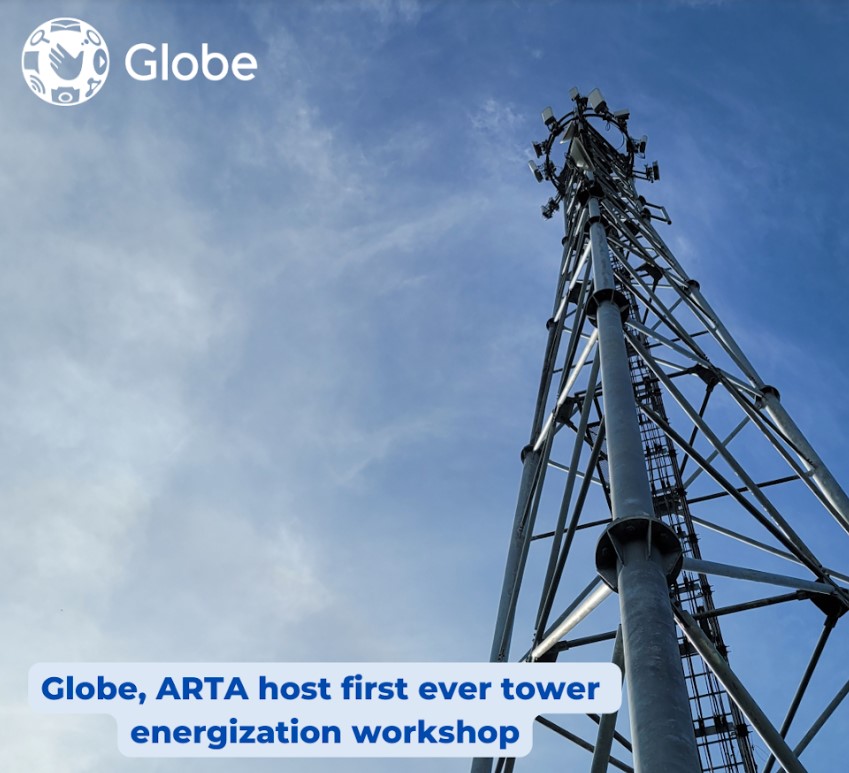In a milestone event aimed at boosting the country’s internet connectivity, Globe joined forces with the Anti-Red Tape Authority (ARTA) to host the first-ever Tower Energization Process Workshop.
This collaboration cultivates a cooperative environment that encourages industry-wide advancement.
The workshop was a response to the pressing need for efficient tower energization, which becomes even more crucial with the deployment of power-intensive 5G sites and active antenna units.
It represents the first of a planned series dedicated to stimulating progress within the telecom sector through collective action, in line with national legislation such as the Ease of Doing Business Act of 2018 and the Bayanihan to Recover As One Act of 2020.
“We are making history here. This is a moment really for us to seize and collaborate, share experiences and foster the development of innovative solutions that will bring benefits to the industry as a whole. And by working together, we can start this environment where telecommunications thrive, acting as a catalyst for progress, digital inclusion and economic development. They say that familiarity breeds contempt. Actually, it’s communications that breed collaboration and cooperation,” Secretary Ernest Perez, ARTA Director General, said in his opening remarks at the event held recently at The Globe Tower.
Setting the tone for the workshop, Perez emphasized the dual objectives of the initiative, saying, “It’s not sufficient to expedite permits and processes for tower construction alone – energizing these towers is equally critical. We must not compromise on either aspect. These two must go together.”
The event’s goals centered around identifying existing process gaps in the energization of telco towers, collating recommendations for improvement, and drafting implementing rules and regulations.
Globe expressed hopes that the collaborative platform can also influence new policies and extend the impact of the successful ARTA Joint Memorandum Circular (JMC), which simplifies procedures in obtaining permits, licenses, and certifications for telecom infrastructure, as mandated by Section 15 of Republic Act No. 11032. An Executive Order will be necessary to succeed the Bayanihan II Law, set to expire in September 2023.
The streamlined procedure helped telcos expedite network expansion as demand for connectivity exploded during the pandemic, when many did their work and studies at home. Through the JMC, Globe built nearly 4,500 cell sites built from 2020 to 2022, doubling its rate of network builds.
Globe Group President and CEO Ernest Cu expressed support for the initiative, saying, “There is no doubt that Bayanihan II and the JMC have created significant improvements in our speeds, availability and reliability, as recognized by global analytics firms. The Philippines is no longer lagging behind. Yet, there’s still a lot of work to do.”
“Today, we’re trying to figure out where the bottlenecks are. One of the biggest bottlenecks is the energization of particular sites. We hope that with this workshop and with the assistance of Secretary Perez, we can bring this up to the President,” said Cu.
Workshop participants included Mobile Network Operators, Independent Tower Companies, and key stakeholders from ARTA. This diverse attendance highlights the industry-wide commitment to resolving the challenges that hinder the tower energization process in certain sites.
“Let us be the change we seek, recognizing that our actions today will shape the future of telecommunications for generations to come. Let us provide the much-needed faster internet connection and energize the same because this is the only way that we can see the Philippines developing into a developed economy,” Perez concluded.
BusinessNewsAsia
